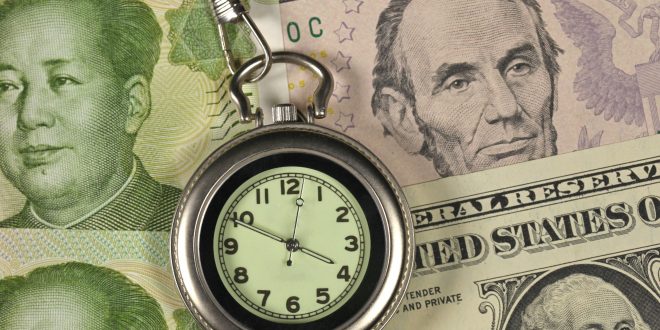The Non-Farm Payrolls report was the highlight of last week. Friday’s US Non-Farm Payrolls report disappointed with only 235,000 jobs recorded in August vs. 750,000 expected. The average hourly earnings index indicated an improvement by 4.3% compared to 4.1% on an annual basis and 0.6% compared to 0.4% MoM. The unemployment rate fell to 5.2% compared to the previous 5.4%, and the US labor productivity rose to 0.6% last August.
Wall Street
The Nasdaq closed Friday at a new record high, but Wall Street’s major indexes headed towards the Labor Day weekend with mixed performance.
This came after the disappointing NFP report, which raised concerns about the pace of economic recovery, but weakens expectations of tapering in the near term.
The majority of Standard & Poor’s 11 sectors closed lower, and the Energy and Financial Services index were among the losers.
Bank stocks, which generally do better when bond yields rise, fell even as benchmark 10-year Treasury yields rose after the report.
The Dow Jones Industrial Average fell 74.47 points, or 0.21%, to 35,369.35 points, the S & P500 index closed down 1.41 points, or 0.03%, to 4535.54, the Nasdaq Composite Index increased 32.34 points, or 0.21%, to 15363.52 points.
Technology stocks tend to perform better in a low-interest-rate environment.
Oil
Oil prices fell Friday, September 3, after the US jobs report indicated an irregular recovery in light of the pandemic.
The losses were limited by fears that US supplies would continue to be affected by Hurricane Ida, which reduced production from the Gulf of Mexico.
Brent crude futures fell 42 cents, or 0.58%, to $72.61 a barrel, and US West Texas Intermediate crude futures fell 70 cents, or 1%, to $69.29 a barrel.
US Dollar
The US dollar took a beating from the US data, especially the NFP report, which came surprisingly to the downside. The US Dollar Index, which measures the greenback’s strength against a basket of major currencies, fell to 92.14 from 92.58 last week. The dollar posted a high of 92.76 against a low of 92.00.
Gold
On the other hand, the precious metal benefited from the performance of the US currency affected by the soft data in the US. As a result, gold futures rose to $1,826 an ounce from 1,816 last week. Gold touched a low of 1801 and a high of 1834.
Euro
The Euro ended last week’s trading in the bullish direction with the weakness of the US dollar and the markets ignoring the rising consumer prices in the Eurozone. As a result, EUR/USD rose to 1.1878 versus 1.1795 recorded last week.
Calendar
The annualized Eurozone Consumer Price Index (CPI) came in at 3.0% in August, above expectations of 2.7%, vs. June’s reading of 2.2%, the latest data published by Eurostat showed.
The core figures jumped by 1.6% YoY in August compared to 1.5% expectations and 0.7% recorded previously.
Eurozone’s Retail Sales unexpectedly dropped by 2.3% MoM in July versus 0.1% expected and 1.8% last, the official figures released by Eurostat showed on Friday.
According to the preliminary estimate published by Destatist on Monday, consumer inflation in Germany, as measured by CPI, decelerated sharply in August and remained flat as compared to the 0.9% rise recorded in the previous month. Yearly, the CPI edged higher to 3.9% from 3.8% in July.
According to the latest data reported by Germany’s Destatis on Monday, the country’s Retail Sales dropped by 5.1% MoM in July versus -0.9% expected and 4.2% last.
Canada’s Real Gross Domestic Product (GDP) expanded at a monthly rate of 0.7% in June, the data published by Statistics Canada revaled. This reading came in line with the market expectation. The annualized GDP contracted by 1.1% in Q2, missing analysts’ estimate for a growth of 2.5%.
There were 340,000 initial claims for unemployment benefits in the US during the week ending August 28, the data published by the US Department of Labor revealed last week. This reading followed the previous print of 354,000 and was slightly better than the market expectation of 345,000.
 Noor Trends News, Technical Analysis, Educational Tools and Recommendations
Noor Trends News, Technical Analysis, Educational Tools and Recommendations




